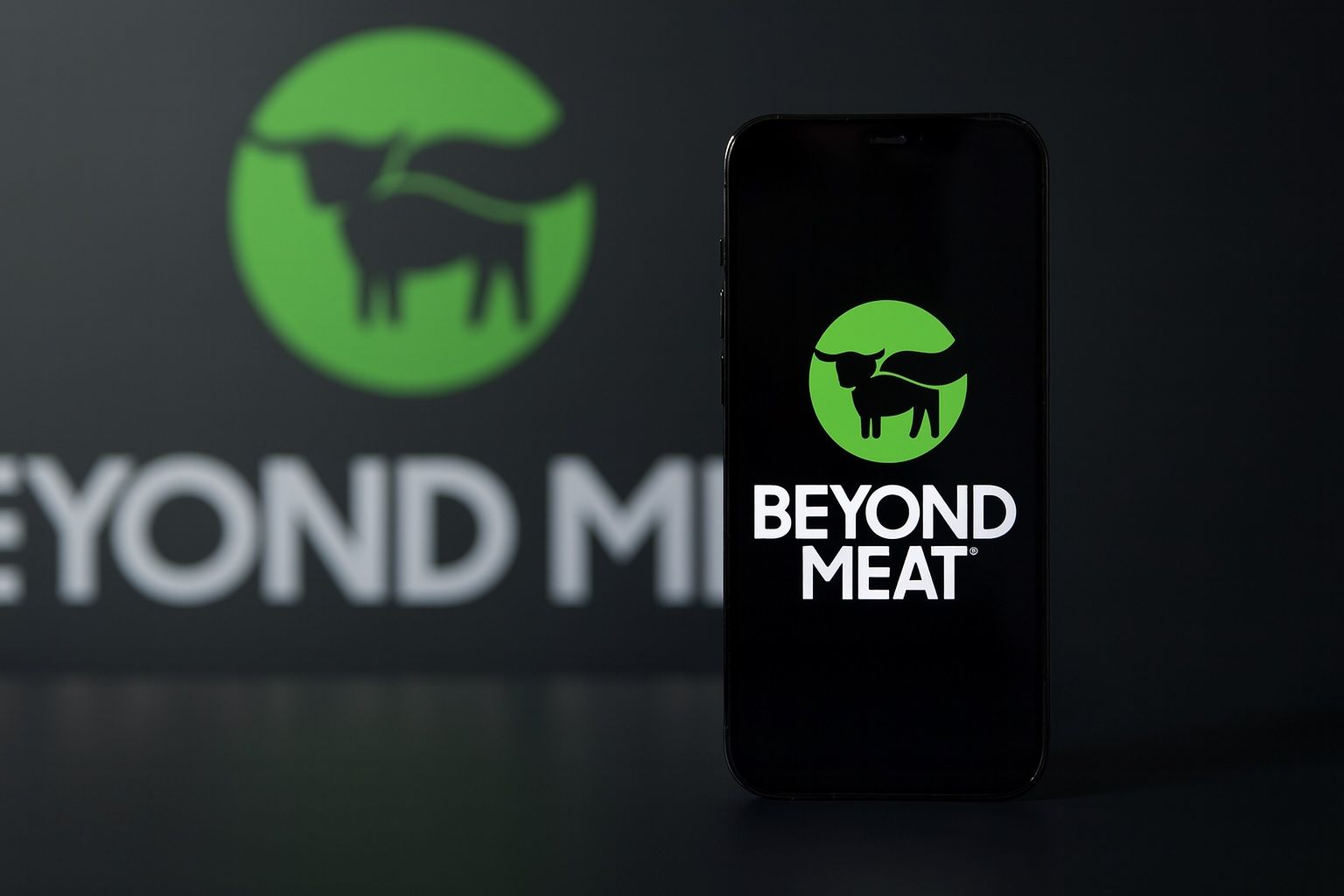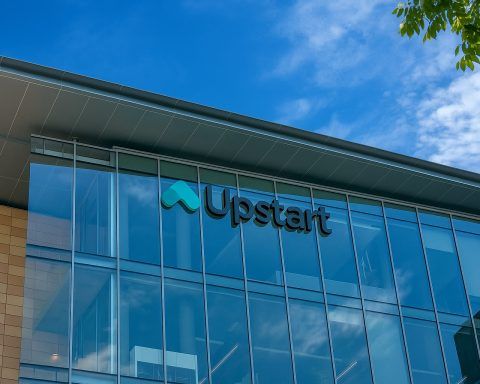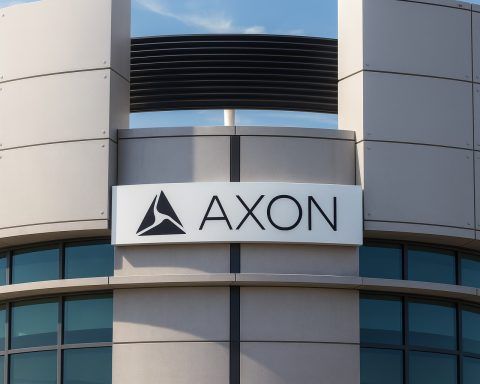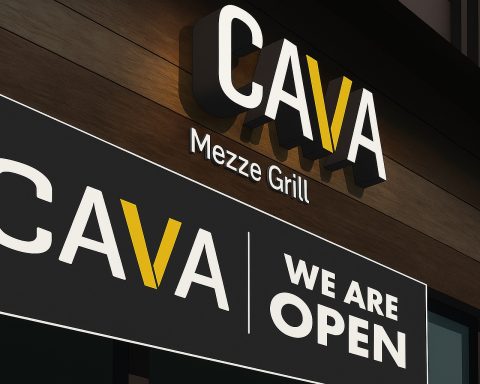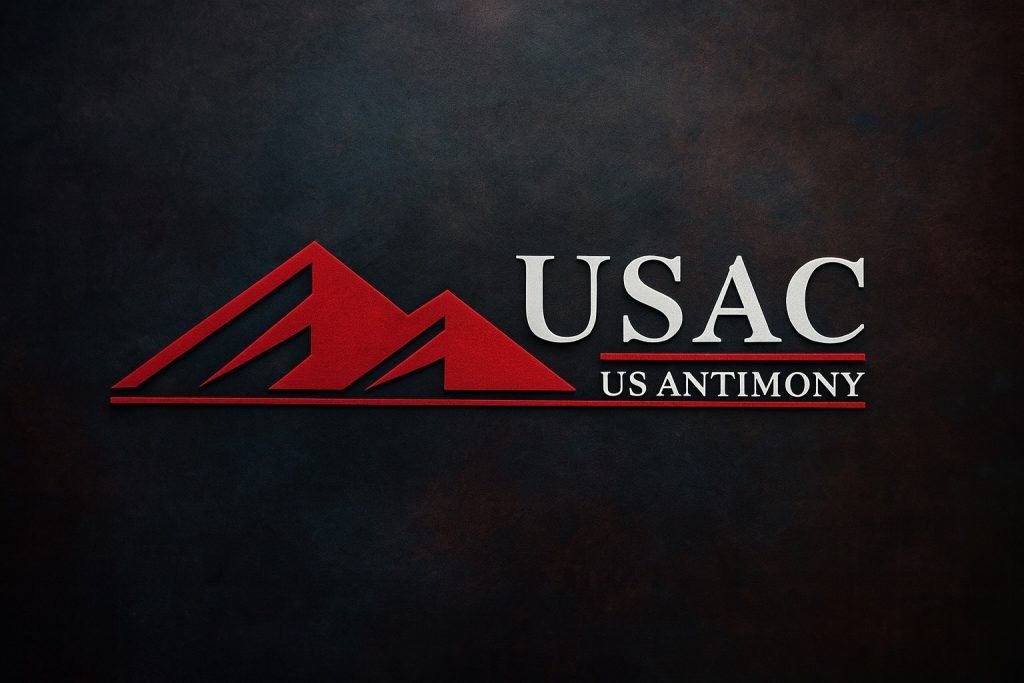- Current Price & Crash: Beyond Meat’s stock (NASDAQ: BYND) trades around $1.3–$1.4 per share as of early November 2025, after collapsing about 99% from its all-time highs in 2019 [1] [2]. Shares spiked briefly in late October amid a meme-stock frenzy (up ~240% in a week) but remain over 50% lower year-to-date [3] [4].
- Analyst Sentiment: Wall Street sentiment is overwhelmingly bearish. No major analysts rate BYND a “Buy” – about 7–9 analysts cover the stock with “Sell/Underperform” consensus [5]. The average 12-month price target is only around $2 (implying upside mainly because the stock is so beaten down), with targets ranging roughly from $0.80 on the low end to $4.00+ on the high end [6] [7]. A recent analyst even slashed his target to $1.50 amid ongoing losses [8].
- Financial Struggles: Beyond Meat’s sales and earnings are deteriorating. Q2 2025 revenue was just $75 million (down ~20% year-over-year) with a net loss, continuing a trend of annual revenue declines since 2022 and no annual profits since its IPO [9] [10]. Q3 2025 earnings were delayed to Nov. 11 due to a large impairment charge, rattling investors [11]. The company faces high cash burn, shrinking gross margins (11.5% in Q2), and has aggressively cut costs (including layoffs) to survive [12] [13].
- Industry Headwinds: The plant-based meat market is slumping after years of hype. U.S. sales of meat alternatives have fallen sharply (e.g. refrigerated plant-based meats down ~12% in dollar sales over the past year) [14], and unit volumes are declining double-digits [15]. Consumer interest has cooled due to “healthier eating” trends, inflation (high prices), and even the rise of weight-loss drugs that curb appetite [16] [17]. Many once-promising alt-meat startups are struggling or shutting down [18] [19], underscoring a broader sector slowdown that directly pressures Beyond Meat.
- Competition: Beyond Meat faces stiff competition from both rivals like Impossible Foods (private) and big food companies launching their own alternative proteins. Impossible inked deals such as Burger King’s Impossible Whopper and claims a stronger balance sheet (no debt) compared to Beyond [20] [21]. Traditional meat and food companies (e.g. Tyson, Nestlé, Kellogg’s MorningStar Farms) also offer plant-based products. Beyond Meat’s brand still has global recognition, but rivals are fighting for a limited pool of flexitarian consumers, often with similar products.
- Recent Developments: Beyond Meat has been taking drastic steps to stabilize. In late 2025, it swapped debt for equity, cutting ~$800 million in debt to avoid default – but at the cost of major share dilution [22]. It hired a Chief Transformation Officer (turnaround specialist) and announced further layoffs [23]. On a brighter note, the company continues to pursue partnerships and menu placements: for example, Beyond just teamed up with Hard Rock Cafe in November 2025 to offer a new plant-based burger nationwide [24]. Such deals aim to rekindle growth, even as earlier high-profile trials (McDonald’s McPlant burger, KFC’s Beyond Fried Chicken) saw limited success.
- Investor Outlook:Investor sentiment is mixed between speculative traders and fundamental skeptics. BYND has a high short interest and has experienced volatile short squeezes (the late-Oct rally being a prime example driven by retail traders covering shorts [25]). However, long-term investors remain cautious given bankruptcy fears earlier in 2025 – Reuters noted the company’s “survival hangs in the balance” before the debt restructuring [26]. Institutions have pared back or hedged their positions, and the stock’s inclusion in meme-stock chatter underscores its risky, sentiment-driven nature.
- Scenarios: Looking ahead through 2025, Beyond Meat’s trajectory could diverge widely. Bullish case: a successful turnaround (stabilizing sales, cutting losses) might propel BYND back toward $4+ (the high end of analyst targets) [27] if consumer demand and investor confidence return. Bearish case: continued declines and cash burn could send BYND toward $1 or lower, perhaps even testing penny-stock levels near the $0.80 worst-case analyst target [28] or below. Base case: the stock muddles in the middle – volatile but roughly range-bound, perhaps edging up toward ~$2 (consensus target) as cost cuts take hold but meaningful growth remains elusive [29].
Current Stock Price and Performance
As of early November 2025, Beyond Meat’s stock is trading in the mid-$1 range per share [30]. The latest closing price was about $1.39 on Nov 3, 2025 [31], a stunning collapse from its peak of $239.71 in 2019. This means BYND has lost roughly 99% of its value since its all-time high [32]. Even on a 52-week basis, the stock’s range has been extreme – it hit a low of about $0.50 during a capitulation in 2025 and a 52-week high around $7.69 [33] (reached back in early 2025 before the slide accelerated). The stock’s market cap now stands near $500 million, a far cry from its $10+ billion valuation in its heyday.
Such a dramatic decline reflects both company-specific struggles and a deflating hype cycle around plant-based stocks. Notably, BYND experienced explosive volatility in late October 2025: its share price rocketed from penny-stock levels to around $3 after gaining nearly 7× in four sessions [34]. This staggering jump came on the back of a meme-stock style short squeeze, as a wave of retail traders piled in and forced bearish short-sellers to cover positions [35]. However, that spike was short-lived – the stock quickly gave back those gains. Reuters emphasized that the surge was “not a sign of recovering demand… but rather a short squeeze” driven by market dynamics, not fundamentals [36]. Indeed, after that frenzy subsided, Beyond Meat shares fell back below $2 and then even further on earnings delays (more on that below).
Year-to-date in 2025, BYND remains deep in the red. Even factoring in the meme rally, the stock was still down 56% for the year through early November [37]. By comparison, the S&P 500 was roughly flat to slightly up in 2025, meaning Beyond Meat has grossly underperformed the broader market. In fact, the stock has underperformed for multiple years; an investor who bought at the IPO in 2019 and held would have seen virtually all their investment wiped out at this point. Such poor performance has relegated Beyond Meat to largely speculative status – it even appears in some “meme stock” ETFs and forums, illustrating how far sentiment has fallen from the optimistic growth darling it once was.
Analyst Forecasts: Price Targets and Ratings
Wall Street analysts are largely pessimistic about Beyond Meat’s prospects through 2025. The stock carries a consensus “Strong Sell” rating [38]. Of roughly 9 analysts covering BYND, 7 have Sell/Underperform ratings and 2 have Hold, with 0 Buys [39] [40]. This skew towards negative ratings reflects the company’s deteriorating fundamentals and the skepticism that it can turn itself around soon.
The average 12-month price target for BYND is only about $2.00 per share [41]. For context, that’s actually ~50–60% higher than the current price – but such “upside” is largely a function of how low the stock has sunk. In other words, analysts on average think the stock might rebound modestly to around $2, but that still implies a tremendous loss for anyone who invested in the past. According to MarketBeat, the mean target is $2.08 (approximately 52% above the ~$1.37 price around late October) [42]. Barchart similarly reports an average target of $2.23, which is about 60% above recent levels [43]. In short, the street consensus sees some recovery off the bottom, but not a return anywhere near prior heights.
It’s also worth noting the wide range of individual analyst targets, highlighting the uncertainty. The lowest targets sit around $0.80 per share [44] – essentially predicting the stock could halve again and head toward penny-stock territory. On the high end, a couple of analysts still have targets in the $4 – $6 range [45] [46], suggesting that if a turnaround gains traction, the stock could multiply from here. Nasdaq’s latest compilation (via Fintel) even showed a high target of $6.90 versus a low of $0.81 [47]. However, those optimistic outliers are few; most analysts have been cutting their targets over time rather than raising them.
For example, Mizuho Securities in October 2025 issued a notably bearish revision, lowering its BYND price target from $2.00 to $1.50 and reiterating an “Underperform” rating [48]. The Mizuho analyst’s new $1.50 target implied roughly 50% downside at the time of the call, underscoring their view that the stock could slide even further from already depressed levels [49]. This call contributed to a sell-off (the stock gapped down after the downgrade). Other firms have similarly dour outlooks: Cowen maintains a Sell, Argus cut its rating from Hold to Sell, and BMO Capital in August slashed its target from $5 to $4 (with a Market Perform rating) amid worsening results [50]. Even the more neutral analysts are extremely cautious – e.g. BTIG is at “Neutral” (effectively a no-confidence stance) [51].
Overall, the analyst community sees little reason to buy BYND stock right now. Consensus earnings estimates anticipate continued losses in the near term (the company is still expected to be negative EPS for 2025). The overwhelming “Sell” consensus and low price targets [52] [53] reflect concerns about Beyond Meat’s ability to regain growth or profitability. However, a few analysts do acknowledge upside if certain catalysts hit (for instance, if Beyond’s cost-cutting yields faster improvement, or if a strategic investor steps in). This dichotomy is why we have some high-end targets still near $4+. For the average observer though, the takeaway is that experts are bracing for volatility and mostly downside or at best a very modest recovery by the end of 2025.
Recent Earnings and Financial Results
Beyond Meat’s financial performance in recent quarters has been quite poor, reinforcing the stock’s decline. Second quarter 2025 (reported in August) was especially disappointing: revenue came in at $74.96 million, which was well below analyst expectations (estimates were ~$85.7M) [54], and represented a 19.5% drop year-over-year [55]. In other words, sales shrank significantly versus 2024 – a stark reversal for a company that once was in high-growth mode. The Q2 net loss was also larger than expected; BYND posted an EPS of –$0.43, missing consensus (–$0.37) [56]. This marked yet another quarterly loss as the company struggles to reach profitability. In fact, Beyond Meat has never recorded an annual profit since its 2019 IPO [57], and that trend shows no signs of immediate reversal.
Breaking down the revenue decline: sales in Beyond Meat’s core U.S. market plunged by 27% year-on-year in Q2 [58]. Management attributed this to slowing demand, “premium” pricing, and a tough macro environment [59] – essentially, fewer people are buying Beyond’s products, partly because they’re relatively expensive and discretionary. The company also cited misinformation about health benefits of plant-based meat that has “become deeply ingrained” and hurt consumer perception [60]. International sales were not much better, down ~26%, exacerbated by the end of some promotional partnerships and certain restaurant partners discontinuing Beyond burgers on menus [61]. For example, some fast-food chains that had trialed Beyond’s patties did not expand those tests, leading to lost distribution. The result is that Beyond Meat’s global revenue for the first half of 2025 was substantially lower than the prior year, reflecting a shrinking business.
Beyond Meat’s profit margins and cash flow are also dire. In Q2 2025, gross margin was only 11.5%, down from 14.7% a year earlier [62]. Such thin gross margins (and negative operating margins) indicate the company isn’t covering its fixed costs well at these lower sales volumes. Management noted issues like poor fixed-cost absorption (underutilized factories), unfavorable product mix, and even asset write-offs – for instance, an accelerated depreciation charge after suspending its operations in China hurt margins [63]. Operating expenses remain high relative to sales, though the company has been cutting staff and expenses to try to slow the cash burn. Operating cash flow has been deeply negative, which is why Beyond Meat has had to repeatedly raise capital in past years to fund its operations.
A major recent development was the handling of third quarter 2025 results. Beyond Meat was originally scheduled to report Q3 earnings in early November, but the company announced it would delay the report by about a week (to November 11, 2025) due to a need to “quantify an impairment charge” [64]. This news, disclosed in an Oct. 24 8-K and a Nov. 3 press release, alarmed investors and sent the stock down ~12% in one day [65]. A delayed earnings release is often a red flag, suggesting potential accounting or financial issues. In Beyond’s case, they indicated a substantial non-cash write-down of certain assets would be taken in Q3, and they needed more time to finalize the numbers [66] [67]. The impairment likely relates to reduced value of inventory, equipment, or perhaps intangibles after the collapse of demand. Notably, Beyond Meat had actually pre-announced that its Q3 revenue would slightly beat expectations (they forecast Q3 sales above prior guidance in late October) [68], but this positive was overshadowed by the impairment and delay. The market’s reaction shows that investors are more worried about the balance sheet and one-time charges than a minor revenue beat.
We’ll see the official Q3 numbers on Nov. 11, but expectations are tempered. Analysts forecast full-year 2025 revenue around $280–$300 million, which would be a double-digit percentage decline from 2024 [69]. Indeed, one forecast cited by Barchart is $284 million for FY2025, down ~13% YoY [70]. Beyond Meat’s own management has pivoted from growth mode to survival mode: they have set a goal to achieve positive EBITDA by the second half of 2026 (i.e. stop losing money on an operating basis by then) [71]. That is still a long way off and underscores that 2025 will likely remain unprofitable, albeit with (hopefully) narrowing losses if their cost-cutting works.
To shore up its finances, Beyond Meat undertook a significant debt restructuring in late Q3 2025. The company launched an exchange offer for its convertible senior notes, effectively swapping a large portion of debt for equity [72]. This move was aimed at avoiding a near-term default on those notes and easing debt burden. It succeeded in reducing about $806 million of debt but at the cost of massive dilution (issuing a lot of new shares to bondholders) [73]. The upside is that bankruptcy risk in the immediate term was reduced, and management claimed they now have enough liquidity to last at least another year or so [74]. The downside is existing shareholders saw their stakes diluted (the share count ballooned, explaining the ~392 million shares outstanding now [75]), and the stock’s value eroded further on that news.
Operationally, Beyond Meat is in retrenchment. It has been closing or scaling back facilities (including a recently halted operation in China), slashing expenses, and focusing on a few core products. In August 2025, the company brought in John Boken from AlixPartners as an interim Chief Transformation Officer [76] – essentially a turnaround consultant to restructure operations. It also announced another round of layoffs that month [77], signaling how severe the situation had become. These actions, while painful, are aimed at trimming down to a sustainable cost structure given the lower sales volumes. The hope is that by late 2025 and 2026, the cost base will be right-sized and any uptick in sales will more readily improve the bottom line. However, restructuring takes time, and there’s execution risk in actually hitting the planned savings.
In summary, recent earnings paint a picture of a company in decline and transition. Revenues are falling, losses are ongoing, and extraordinary measures (impairments, debt swaps, layoffs) have been needed to keep the company afloat. The rest of 2025 will be critical – investors are anxiously awaiting the delayed Q3 results and any guidance or commentary for Q4. If Beyond Meat can show that the worst is behind it, that could stabilize the stock. But if the numbers reveal further deterioration (or new surprises), it could reinforce the bearish view that BYND’s fair value might be under $1.
Major Events, Partnerships, and Strategic Moves
During its meteoric rise, Beyond Meat’s strategy heavily relied on partnerships with major restaurant chains and foodservice providers to drive adoption. In recent years, the company has announced or trialed a number of noteworthy collaborations – some successful, some not.
One of the most publicized was with McDonald’s. In 2021, McDonald’s tested the “McPlant” burger (co-developed with Beyond Meat) in select markets. While it generated buzz, the test ended and as of 2025 there’s no nationwide McPlant on the McDonald’s menu – a letdown for investors who once hoped Beyond Meat would land a permanent spot at the golden arches. Similarly, Beyond partnered with Yum! Brands: KFC tested Beyond Fried Chicken nuggets, and Taco Bell experimented with a plant-based filling. These trials were limited-time and did not become permanent staples, though KFC did use Beyond Chicken in a few promotional windows. The lack of a long-term rollout was a disappointment and indicated tepid consumer reception or operational challenges at scale.
Beyond Meat also entered a joint venture with PepsiCo in 2021, called The PLANeT Partnership, to make plant-based snacks and drinks. The first product from that JV was Beyond Meat Jerky, launched in early 2022. However, Beyond Meat Jerky turned out to be a mixed success – it initially helped boost Beyond’s revenue (contributing to a short-lived sales uptick in 2022), but production difficulties and lukewarm demand meant it didn’t become a breakout hit. By late 2022/2023, reports emerged that the PepsiCo JV was winding down. Beyond Meat ended up taking on the Jerky production in-house and the product is still sold, but it wasn’t the game-changer the company had hoped for. (The Jerky launch also infamously caused operational headaches and inventory write-offs that hurt margins.)
On a more positive note, Beyond Meat continues to secure new partnerships, especially internationally and with smaller chains. Just in November 2025, Beyond Meat announced a partnership with Hard Rock Cafe: the iconic restaurant chain will be offering the latest Beyond Burger (Beyond Burger® IV) as a substitute for any beef burger on its menu nationwide [78]. This rollout suggests Beyond is still actively marketing its improved formulations to eateries. Hard Rock Cafe, while not as large as McDonald’s, is a well-known brand and could expose the Beyond Burger to a broad, tourist-heavy customer base. Such partnerships can drive incremental sales and, importantly, keep the Beyond brand visible. The company has also collaborated with fast-casual and local restaurants, and it maintains a presence on many grocery store shelves globally.
In retail, Beyond Meat’s products remain stocked in major supermarkets (Kroger, Walmart, Whole Foods, etc.), though shelf space and demand have fluctuated. Some retailers have reportedly trimmed their plant-based meat assortment as sales slowed [79]. Beyond has responded by adjusting its product offerings – for instance, focusing on top sellers like Beyond Burger, Beyond Sausage, and Beyond Beef (ground) and introducing new or improved items like Beyond Steak (plant-based steak tips) and Beyond Chicken tenders to spark consumer interest. The company often touts product innovation as a key strategy: making plant-based meat tastier, healthier, and more meat-like to win over more consumers.
On the strategic investment front, it’s notable that insiders and big investors have largely been selling or staying away in 2025. Earlier, there were partnerships involving equity – e.g. Tyson Foods had an early stake in Beyond (which it divested before the IPO), and Don Thompson (McDonald’s ex-CEO) was on the board. But lately, no major new equity partners have emerged publicly. Instead, we’ve seen a few institutional investors increasing their stakes at lows, possibly speculating on a rebound. For instance, data from Fintel in Oct 2025 showed total institutional shares owned ticked up ~3% last quarter even as some funds exited [80]. It appears some value-oriented or special-situation investors might be nibbling at BYND now that it’s under $2, though the overall institutional ownership count fell slightly (indicating others gave up) [81].
Finally, it’s worth mentioning that Beyond Meat’s mission and brand still carry intangible value. The company was a first-mover in bringing plant-based meat to the mainstream and has strong brand recognition. In a scenario where another large food company wanted to jump-start its alt-protein offerings, Beyond Meat could be seen as an acquisition target at these low valuations. There’s no concrete news of buyout offers, but speculation exists given the stock’s collapse. Management has not indicated any desire to sell and is focused on turning the business around themselves. Still, this “strategic option” hovers in the background – any hint of activist investors or a potential acquirer can influence the stock (for example, even unconfirmed rumors could cause temporary spikes).
In summary, Beyond Meat’s recent major moves have been about survival and adaptation: restructuring and refinancing to fix the balance sheet, refining product lines, and forging targeted partnerships to keep its products in front of consumers. The company is no longer in aggressive expansion mode as it was in 2019–2020. Now it’s about trying to reignite growth (or at least stop declines) through innovation and deals, while drastically cutting costs to eventually reach breakeven.
Broader Plant-Based Meat Market Trends
Beyond Meat’s fortunes are closely tied to the broader plant-based meat industry, which has undergone a dramatic boom-and-bust cycle. Understanding these market trends is key to forecasting BYND stock.
A few years ago, optimism about plant-based meat was sky-high. In 2019, Barclays famously predicted the global alternative meat market could reach $140 billion in annual sales within a decade [82]. This bullish outlook was fueled by early growth rates and societal trends (concerns over climate, health, animal welfare). Beyond Meat’s IPO and initial growth seemed to validate the excitement. However, since 2022 the market’s growth has stalled and reversed. After double-digit growth in the late 2010s, sales of plant-based meats started declining in 2022 and 2023 in key markets like the U.S. [83].
To put numbers on it: In the U.S. retail market, plant-based meat dollar sales fell ~7% in 2024 according to The Good Food Institute [84]. By 2025, the declines accelerated. Data from Spins (cited May 2025) showed refrigerated plant-based meat sales down 12.1% in dollars and 14.4% in units year-over-year (for the 12 months ending April 20, 2025) [85]. Frozen plant-based meats fared slightly better but still saw a 5.3% dollar sales decline [86]. Particularly steep drops were observed in certain categories: refrigerated plant-based burgers (the flagship product for Beyond and Impossible) saw a 26% plunge in dollar sales and a 34% crash in unit volumes over that period [87]. In other words, over a quarter of the plant-based burger market just evaporated – a telling statistic that fewer people are buying these products than a year ago. Other subcategories like plant-based sausages and meatballs were down 20%+ as well [88].
Why the sudden reversal? Multiple factors seem to be at play:
- Satiation of Early Adopters & Hype Fade: Many consumers who were curious have tried these products by now; novelty has worn off. There wasn’t enough repeat adoption among mainstream meat-eaters to keep growth rising. As one industry expert put it, Beyond Meat “hit its cap” – they tried to create a mass market quickly with lots of investor money, but ultimately didn’t convert enough regular consumers [89]. The early thesis that meat-eaters would seamlessly swap to plants en masse has not materialized.
- Health and “Clean Eating” Concerns: A notable backlash has emerged against plant-based meats on the basis that they are processed foods. Some health-conscious consumers view them as “ultra-processed” and loaded with additives (even if they are cholesterol-free and climate-friendly). There’s a “clean label” movement and what Reuters dubbed the “Make America Healthy Again” trend encouraging whole, natural foods over processed alternatives [90]. Ironically, this means some of the very health-focused shoppers who might be inclined to eat less meat are opting for vegetables, legumes, or minimally processed options instead of faux meats. Analysts like Danni Hewson have noted that many people are asking questions about how plant-based meat is produced, and choosing simpler proteins like beans and pulses instead [91]. Beyond Meat’s CEO Ethan Brown has complained that concerns over ingredients are “unfounded” and has tried to be more transparent (highlighting things like “made with fava beans, pea protein, avocado oil” to sound healthier) [92]. But changing that public perception is a challenge.
- “Woke” or Political Framing: Another twist is the cultural/political framing. Impossible Foods’ CEO Peter McGuinness remarked in 2025 that plant-based food “became woke and partisan”, alienating some consumers [93]. Early marketing and advocates sometimes gave the impression that eating meat was morally wrong or that plant-based was an ideology – this may have turned off a chunk of the mainstream (especially in rural or more traditional demographics). McGuinness said it was a mistake to target vegans and shame meat-eaters; instead, companies need to be inclusive and focus on taste and environmental benefits without judgment [94] [95]. This shift in marketing tone is now underway (e.g., Impossible adjusting its messaging), but the initial positioning perhaps limited the addressable market by making plant-based meat a bit polarizing.
- High Price and Inflation: Price has been a consistent barrier. Plant-based meats generally cost more than equivalent real meats (pound for pound). When inflation surged in 2022–2023, consumers became less willing to pay a premium for Beyond Burgers. Beyond Meat acknowledged that “premium pricing” hurt demand in 2025 [96]. Real meat prices had risen too, but still, the gap made swapping harder to justify for many. Some grocers responded by discounting plant-based inventory or in some cases, cutting slow-selling products. The recent inflationary environment thus dampened trial and re-purchase rates for expensive meat alternatives.
- Competition and Market Saturation: In the 2019-2021 boom, many new brands and products flooded the market – not just Beyond and Impossible, but dozens of startups and private label offerings. This led to overcrowded shelf space and inevitable shakeout. By 2025, we are indeed seeing a shakeout: e.g., Meati, a startup making mushroom-based meat, went from a $650M valuation to essentially being sold for scrap ($4M) in 2025 [97]. Maple Leaf Foods (a big Canadian meat company) wrote down most of its investment in plant-based lines in 2022. Unilever decided to sell off its plant-based meat brand (The Vegetarian Butcher) in 2025 amid underperformance [98]. These examples show the industry is consolidating and many players are failing. For Beyond Meat, competition from Impossible Foods and others meant that even as the pie stopped growing, more companies were fighting for slices – intensifying the pressure on sales and margins.
- Macroeconomic and Other Factors: Another interesting factor cited is the emergence of GLP-1 weight-loss drugs (like Ozempic and Wegovy). These drugs have become popular and effectively suppress appetite. Some analysts speculate that as more Americans use these medications, overall food consumption might dip – particularly for snacks and indulgent foods. It’s a nascent trend, but Reuters noted that the rise of weight-loss drugs has “expedited [Beyond Meat’s] decline” by contributing to a shift in eating habits [99]. If people are eating less or trying to consume more protein and fewer carbs, that could indirectly hurt products like plant-based burgers (which often are as caloric as real burgers). While likely a minor factor so far, it’s part of the narrative that Beyond Meat is swimming upstream against multiple social currents.
Given these headwinds, it’s no surprise that Beyond Meat’s sales have been falling. The entire category is struggling to find its footing. There are still some bright spots: certain segments like plant-based chicken substitutes (nuggets, tenders) have shown small growth even in 2025 [100], and plant-based milk (oat, almond, etc.) – a different category – remains a larger and more stable business than meat alternatives. But for the “meatless meats,” the outlook turned from boundless growth to an “uncertain future” (as a Forbes piece in 2025 called it [101]).
This broader context implies that Beyond Meat’s challenges are not just company-specific; they’re systemic. Even if Beyond executes well, it is sailing into the wind of changing consumer sentiment and a contracting market. The company’s fate may partly hinge on whether the plant-based trend can reignite or at least stabilize. If the overall category resumes growth (even modestly), Beyond Meat, as a market leader, could benefit disproportionately. Conversely, if the category keeps shrinking, Beyond will be fighting for a bigger share of a smaller pie – a tough proposition, especially as a premium-priced brand.
Competitive Landscape and Beyond Meat vs. Competitors
In forecasting Beyond Meat’s stock, we must consider competition – because the market’s view of BYND also depends on how it stacks up against peers and alternatives.
Impossible Foods is often cited as Beyond’s chief rival. The two are often compared like Coke vs Pepsi of plant-based meat. Impossible is still private (not publicly traded), but in many grocery aisles and restaurant menus, Impossible is right next to Beyond. Impossible Foods has had its own struggles – reportedly flat or declining sales since 2021, and it has conducted layoffs (20% staff cut in 2023, for example). However, Impossible’s CEO has tried to draw a contrast, asserting that Impossible is financially healthier (with no debt and cash reserves), while Beyond Meat is burdened by debt and dilution [102]. Indeed, Impossible Foods has raised a lot of venture capital over the years (over $2 billion) and hasn’t yet had to tap public markets – giving it a longer runway to weather the downturn. That said, Impossible has also had to temper its growth plans and recently postponed any IPO ambitions until the sector recovers [103]. In terms of products, Impossible’s flagship burger is often rated as slightly closer to real meat by some consumers, and they have a strong presence in restaurants (e.g., Burger King’s Impossible Whopper has been on the menu since 2019). Beyond Meat, on the other hand, has more retail SKUs and international reach (BYND sells in dozens of countries, whereas Impossible’s retail footprint is mostly U.S.). For Beyond to outperform, it may need to differentiate more on health or price, because in taste and brand, Impossible is a formidable competitor that’s fighting for the same customers.
Traditional food giants also loom in the competitive landscape:
- Tyson Foods (the largest U.S. meat producer) launched a plant-based line called Raised & Rooted in 2019. It had limited success and was retooled to include blended meat/plant products. Tyson had initially invested in Beyond Meat pre-IPO but sold its stake, opting to compete instead. They’ve since de-emphasized aggressive plant-meat expansion after weak demand, but they still have capabilities to ramp up if they see opportunity.
- Maple Leaf Foods (owner of Lightlife and Field Roast) was one of the earliest incumbents to bet big on alt-meat, building new facilities for it. After losses, Maple Leaf in 2021-2022 scaled back investment, basically calling the category’s growth “disappointing.” They remain in the market but not expanding rapidly.
- Nestlé launched the Awesome Burger (under its Sweet Earth brand) and has a broad portfolio of veggie products in Europe (Garden Gourmet). They have resources to compete on R&D and price if they choose, though Nestlé too has tempered expectations, focusing on markets where plant-based adoption is higher (like parts of Europe).
- Kellogg’s owns MorningStar Farms, a legacy vegetarian brand (famous for veggie patties in grocery stores). MorningStar (and its newer Incogmeato sub-brand) competes in frozen sections. It’s a longstanding player, though its products historically target vegetarians more than meat-eaters. Kellogg announced plans to spin off or sell its plant-based division in 2023, reflecting the struggles in growth; as of 2025, that spin-off (as “Kellanova”) is underway, and the future of MorningStar Farms is a bit uncertain.
- New entrants and startups: e.g., Beyond’s own former co-founder has a startup called Nowadays focusing on plant-based chicken nuggets. There’s also a wave of fermentation-based and cultivated meat startups (Perfect Day for dairy proteins, Upside Foods for lab-grown meat, etc.), but those aren’t major commercial factors yet in 2025. However, cultivated (cell-cultured) meat did gain regulatory approval in the U.S. in 2023 and small-scale products (like GOOD Meat’s lab-grown chicken) are now served at a few restaurants. Over time, that could become another competitor in the “alternative protein” space, though pricing and scaling issues mean it’s not a 2025 threat.
In the near term, Beyond Meat’s competition for sales is primarily other plant-based brands and actual meat products. One could say Beyond’s biggest competitor is simply the conventional meat industry, since persuading meat eaters to swap is the core challenge. And the conventional meat producers have not stood still – they emphasize improvements in their own sustainability and have massive scale to drop prices. Some fast-food chains that tried plant-based have returned focus to core meat offerings (sometimes citing that plant-based didn’t sell well enough).
From an investor perspective, Beyond Meat stands almost alone as a pure-play public company in this space. (Impossible Foods is still private, and others are divisions within larger companies). This means BYND often becomes a proxy for sentiment about plant-based meat overall. When Beyond’s stock crashed, it signaled waning confidence in the category. Conversely, if there were signs of a turnaround in alt-meat demand, BYND could rally because it’s one of the only direct ways to invest in the theme.
How does Beyond Meat maintain an edge? The company’s strengths include a well-known brand (synonymous with the category), a broad product line, and global distribution relationships. It continues to innovate (e.g., new versions like Beyond Burger 3.0, 4.0 with improved recipes). Also, Beyond has a history of strategic partnerships (Pepsi, fast-food trials) that smaller startups can’t easily secure. On the flip side, its weaknesses relative to competitors include its weak financial position (the debt and need to conserve cash might limit R&D and marketing spend, whereas a company like Impossible or Nestlé can invest more in product development and advertising even during a slump). Also, some would argue Beyond’s products have not improved as rapidly as Impossible’s in taste/texture – though this is subjective.
In essence, Beyond Meat operates in a crowded, tough market. Competitors are vying for the same shrinking customer base, and the company’s ability to meet its forecast depends on outmaneuvering both alternative and traditional protein players. For BYND stock to recover meaningfully, Beyond likely needs to differentiate itself – either via superior product quality, better nutrition profile, lower cost, or brand appeal. Thus far, it hasn’t decisively pulled away from the pack; if anything, its early lead has shrunk. Investors will be watching how Beyond Meat’s market share trends in 2025: holding or growing share would be a positive sign (even if the category is down, at least beating competitors), whereas losing share to Impossible or others would compound the concerns.
Consumer and Investor Sentiment
Consumer sentiment toward Beyond Meat (and plant-based meat in general) has cooled from the faddish enthusiasm of a few years ago. Public surveys and social media chatter suggest a mix of disappointment (some people tried it and didn’t love the taste or price), indifference, and still a core of devoted fans (vegans, environmental advocates). The initial narrative that plant-based meat would be a mass-market revolution has been replaced by a more skeptical narrative in 2025.
One aspect of consumer sentiment is the health perception. As discussed, many consumers now view products like Beyond Meat as “processed” – essentially junk food in healthy clothing. This isn’t entirely fair (Beyond burgers do have less saturated fat and no cholesterol compared to beef, for example), but the ingredient list (with items like methylcellulose, modified starches, etc.) can be a turn-off to clean-eating advocates. Beyond Meat has been working to simplify and improve its formulations, but it’s fighting an uphill battle in the court of public opinion. According to the CEO of Impossible Foods, part of the problem was how the products were initially marketed – almost in a zealot-like fashion that alienated mainstream eaters [104]. Early adopters were vegans and “mission-driven” consumers; to reach the next audience (meat-eaters who might occasionally substitute), the approach needed to change. Now, companies are trying more inclusive marketing: emphasizing taste, quality, and environmental benefits without shaming anyone. McGuinness (Impossible’s CEO) noted they’ve shifted to focus on being “for better food” rather than against meat [105].
Another factor is cultural polarization. Rightly or wrongly, plant-based meat got caught up in culture wars to a degree (the term “woke” was even hurled at it). This may mean that in certain demographics or regions, Beyond Meat isn’t just a neutral food product – it’s seen as part of a cultural trend they don’t subscribe to. That’s a tough sentiment to quantify, but it adds to resistance in some consumer segments. The key for Beyond Meat is to broaden appeal: e.g. through sports partnerships, celebrity chefs, or endorsements that normalize it as just another food option, not a political statement.
On the other hand, environmental and ethical awareness still bolster consumer goodwill in other segments. Many younger consumers want to support sustainable products. If Beyond Meat can convincingly position its products as climate-friendly and tasty/affordable, there is a willing audience. The question is whether that can happen before the company runs out of time/money.
Turning to investor sentiment, it’s been a rollercoaster. Beyond Meat was once a market darling – its IPO in 2019 was one of the best in decades (shares surged +163% on day one). For a while, it had a cult growth stock status. But as financial results deteriorated from 2021 onward, sentiment soured. By 2023–2024, many growth investors fled, and short sellers moved in aggressively.
Short interest in BYND stock has been high – at times a significant percentage of the float. This large short interest (from those betting the stock will fall) set the stage for volatility like the October 2025 squeeze. When too many shorts pile in, any burst of positive or speculative buying can cause a sharp rally as shorts rush to cover – a classic short squeeze dynamic [106]. We saw that when retail traders (perhaps encouraged on Reddit or other forums) noticed BYND had dropped to pennies and piled in, driving a spike. Short sellers were forced to buy shares to cut their losses, pushing the price up further, until it overshot to nearly $3 from $0.50. These moves have made BYND something of a trader’s toy in 2025 – it shows up on lists of most volatile stocks and is closely watched by day traders. Platforms like Benzinga noted Beyond Meat’s momentum “gains fizzled out” after the earnings delay, showing how quickly sentiment swings [107].
Long-term investors (like institutions) appear wary. As noted, the number of institutional holders dipped slightly recently [108]. Some large holders (e.g., Baillie Gifford, which was a big early investor) had reduced or exited earlier. Insider sentiment is also a consideration: have insiders been buying at these lows? So far, there’s no notable insider buying spree publicly disclosed – which if true, indicates even those closest to the company are cautious. (However, absence of buying could also be due to blackout periods around earnings, etc., so one shouldn’t over-interpret that.)
One interesting development: news of a securities fraud investigation by a law firm (announced via press release in Nov 2025) regarding the impairment and stock drop [109]. These sorts of law firm investigations are common whenever a stock plunges (they look for class-action opportunities), and it doesn’t necessarily mean wrongdoing. But it adds to a negative cloud in investor sentiment, as headlines like “Beyond Meat grilled as momentum fizzes out after results delay” don’t inspire confidence [110].
In summary, investor sentiment on BYND is at a low ebb – mostly driven by fundamentals, but with a speculative fringe that still trades it. It’s viewed as high-risk, potentially high-reward by traders, but as a money-loser with bankruptcy risk by fundamentals-focused investors. For sentiment to genuinely improve (beyond just short-term squeezes), the company will likely need to deliver some tangible good news – e.g., evidence of sales stabilizing or a path to breakeven.
Risks and Challenges for BYND
There are several key risks and challenges facing Beyond Meat through the end of 2025, which any forecast must consider:
- Continued Revenue Decline: The most immediate risk is that sales keep falling. As discussed, Beyond Meat is guiding to a decline in 2025 revenue (down ~13%) [111]. If the actual decline is steeper – say due to further loss of restaurant partnerships or weaker grocery sales – it would compound losses and possibly force more drastic action. A shrinking top line makes it harder to reach profitability. The Q3 and Q4 2025 results will indicate if the decline is slowing or persisting. If Beyond were to, for instance, lose a major customer or see an unexpected dip (as happened in Q2), the stock could react very negatively.
- Cash Burn & Liquidity: Beyond Meat has been burning cash each quarter. Even after the debt-for-equity swap, it isn’t out of the woods financially. The company likely still has debt remaining (some convertible notes, leases, etc.) and limited cash. If losses continue, there’s a risk BYND could need to raise fresh capital in 2025 or 2026 – likely through issuing more stock or perhaps getting high-interest loans. Given the stock’s low price, an equity raise would be highly dilutive (and might require a reverse stock split if under $1). The company says it has enough liquidity for at least 12 months after the refinancing [112], but that assumes hitting their internal plans. If things go off track, the specter of bankruptcy or restructuring could return. Essentially, bankruptcy risk is not zero – it’s low in the immediate term but rises if the turnaround falters. This overhang will likely keep many investors away until the financial stability improves.
- Nasdaq Compliance/Penny Stock Risk: With shares spending time under $1, Beyond Meat risks being seen as a “penny stock.” Nasdaq listing rules generally require a stock to stay above $1, or the company must do a reverse split to cure a deficiency. BYND hasn’t been consistently under $1 long enough to trigger that yet, but it’s something to watch. Penny stock status could reduce liquidity and institutional interest further (some funds cannot hold stocks under $5 or $1). It also affects perception – dropping into cents territory again would be psychologically damaging for the brand.
- Execution of Turnaround: Cutting costs and restructuring is easier said than done. There’s risk that the cost cuts could undermine the business (e.g., if too many salespeople are cut, revenue could fall more; if R&D is cut, product quality might suffer). Beyond Meat has to execute a delicate balance of trimming fat while still investing in key areas. They have brought in an expert (John Boken) to help [113], but not all turnarounds succeed. If the planned savings (in operating expenses, manufacturing efficiencies, etc.) do not materialize, profitability will remain out of reach. Conversely, overzealous cuts could impair their ability to grow when the market recovers. It’s a tightrope.
- Consumer Adoption Risks: Beyond Meat’s future also hinges on consumer behavior, which is notoriously hard to change. The company faces the challenge of winning back growth in a skeptical market. If negative consumer perceptions (processed, expensive, “fake”) are not improved, demand might continue to erode. Marketing campaigns and new product launches might not gain traction – that’s a risk. For example, if the new Beyond Steak or the next-gen Beyond Burger doesn’t excite consumers, it could be money spent with little return. Brand fatigue is a risk too; having been around for years now, Beyond needs to refresh its story to avoid being seen as yesterday’s news.
- Competitive Pressure and Price Wars: We must consider the possibility that competitors, to clear inventory or survive, could deeply discount products, forcing Beyond Meat to either also cut prices (hurting margins further) or lose market share. If Impossible Foods, for instance, aggressively lowers prices thanks to its VC war chest, Beyond might struggle to match, given its weaker financial position. Also, any new entrant with a superior product (say a hypothetical plant-based burger that tastes significantly better) could quickly steal share. While no breakthrough product is evident yet, the food tech space is always innovating.
- Macroeconomic Factors: A broader economic downturn in 2025 could pose a risk. If a recession hits, consumers typically cut discretionary and premium purchases – unfortunately, many consider plant-based meats discretionary or premium. In a recession scenario, one might expect further sales decline for Beyond Meat as people opt for cheaper proteins or cook at home more (though Beyond’s retail sales could benefit if people eat out less – it cuts both ways). Inflation continuing high is another risk: it would keep input costs up and consumer demand down.
- Regulatory and Social Risks: While not immediate, there are regulatory considerations (like how these products can be labeled; some states debated banning terms like “burger” or “sausage” for non-meat products). Also, any food safety scare or quality control issue (e.g., a contamination at a Beyond Meat facility) would be a serious blow. And the company’s reputation could further suffer if, for instance, prominent figures or media strongly dissuade plant-based meats (as happened when some health influencers called them “frankenfoods”). These are softer risks but worth noting.
In essence, the challenges for Beyond Meat are significant: it needs to stop the bleeding financially, rekindle consumer interest, and fend off rivals, all in a tough economic and industry context. The road to a successful turnaround is narrow – and if any major risk manifests (like a cash crunch or another big revenue miss), it could derail things. This is why BYND is viewed as a high-risk stock.
Opportunities and Potential Upside
Despite the gloomy picture, there are some opportunities and positive catalysts that could lead to a brighter outcome for Beyond Meat and its stock:
- Stabilization or Rebound in Demand: Trends are not destiny. It’s possible that the decline in plant-based meat sales could bottom out and even reverse slightly. The novelty may have worn off, but the core reasons for plant-based meat (health, environment, animal welfare) haven’t gone away. There is a scenario where the industry regroups, improves products, and consumers slowly give it another chance. For instance, if inflation eases and plant-based products become more affordable relative to meat, some cost-sensitive flexitarians might come back. Also, public awareness of climate change continues to grow – governments or NGOs might push initiatives that favor plant-based diets (for climate or food security reasons). Any uptick in category sales would directly help Beyond Meat’s top line. The company expects to finish 2025 with ~$284M in revenue [114]; if they can even modestly beat that (say, end closer to $300M, implying a smaller decline or flat Q4), it might signal a corner turning.
- New Product Innovation: Beyond Meat’s R&D pipeline could deliver a hit. They have continually refined their flagship Beyond Burger; each iteration has been slightly better in taste/texture. They also launched things like Beyond Meatballs, Beyond Chicken, Beyond Pork (in China), etc. One opportunity is if Beyond can create a product that taps a new market or significantly improves on an existing one. For example, a plant-based steak or whole-cut product that gains consumer approval would open up new use cases (steak, deli slices, etc.). Beyond has hinted at working on whole-cut meats and better chicken analogues. If one of these products were to get rave reviews, it might re-energize brand excitement. Additionally, health-oriented improvements (such as versions with lower sodium, cleaner ingredients, or added nutrients) could attract health-conscious buyers who’ve been wary.
- Cost Reductions Leading to Lower Prices: Beyond Meat has been improving its manufacturing efficiency (in theory). If they manage to substantially cut production costs, they could lower retail prices without killing margins. Lower prices for consumers could boost Beyond Meat’s competitiveness against real meat. Beyond’s CEO for years talked about a goal to eventually underprice animal protein. They aren’t there yet, but any moves in that direction would be a game changer for demand. Perhaps by late 2025 or 2026, if grain and pea protein prices come down and the supply chain is optimized, Beyond could bring down its prices. The company claimed underlying manufacturing costs were improving, even if not evident due to current challenges [115]. Achieving a positive gross margin and then reinvesting some of that into price cuts could stimulate volume (a classic strategy – think Tesla cutting car prices to spur demand, though Beyond isn’t there yet financially).
- International Expansion: There may be more low-hanging fruit outside the saturated U.S. market. Europe and parts of Asia have shown openness to plant-based meats. For example, in the U.K., plant-based options are quite popular and integrated into many stores and menus. Impossible’s CEO noted that markets like the U.K. seem “much more open” and that places like Tesco have embraced plant-based foods more than many U.S. retailers [116]. Beyond Meat is already in China (though operations paused) and Europe, but perhaps renewed focus on international growth could yield results. If Beyond can find pockets of robust demand abroad (say, certain European countries or in cities in Asia with a high vegetarian population), that could offset U.S. weakness. Partnerships like McDonald’s McPlant did continue in some international markets (e.g., McPlant is a regular item in the U.K. and some Europe locations using Beyond patties). Success stories abroad can also eventually influence the U.S. perception (via global buzz).
- Strategic Partnerships or Investments: Beyond Meat might not have to go it alone. An outside strategic investor (like a big food company or even an institutional investor with deep pockets) could take a stake or provide capital, seeing long-term potential. This could shore up confidence and funding. Additionally, more restaurant partnerships (similar to the Hard Rock Cafe deal) can act as catalysts. If, hypothetically, a large chain like Starbucks or Subway expanded a Beyond product nationally, that news would boost the stock and sales. Or if a new product collaboration (like a plant-based McNugget with McDonald’s or a new pizza topping with a national pizza chain) came to fruition, it could reignite momentum. Beyond Meat has a history of announcing big-name collaborations – any new ones in 2025 would be taken as a positive sign.
- Improved Public Sentiment: The narrative can change. If some influencers or studies start highlighting the positive aspects of plant-based meats (e.g., a new study showing health benefits or a major report urging reduced meat consumption for climate reasons), it could sway public opinion. We might also see the novelty cycle come around again – often, what falls out of favor can return (like a “retro” wave). Beyond Meat’s team is likely working on PR and education to win back consumers. Should those efforts bear fruit, consumer sentiment might inch back, benefiting sales.
- Short Squeeze Opportunities: From a pure stock perspective (aside from the company fundamentals), BYND will likely continue to present trading opportunities due to its volatility and high short interest. For a speculative investor, the very factors that make it risky (lots of shorts, heavy pessimism) also mean any good news could spike the stock dramatically. A surprise earnings beat, a new partnership, or an optimistic guidance could force shorts to cover, yielding quick upside. For instance, if Beyond were to report in 2025 that they’ll reach breakeven sooner than expected or that sales decline has stopped, the stock could rally strongly as bears scramble. This isn’t so much a fundamental “opportunity” as it is an ever-present wildcard that could benefit bulls in the short term.
- Acquisition Possibility: As mentioned earlier, there is a scenario (albeit speculative) where Beyond Meat could be bought out by a larger entity. At a ~$500M market cap, a company like Nestlé or PepsiCo could theoretically acquire it outright for its brand, product lineup, and technology. If investors sense any likelihood of this, it would put a floor under the stock. Even rumors of a takeover could boost the price. While management likely wants to remain independent, if the stock stays very low, pressure could mount to consider alternatives. In the food industry, we’ve seen giants scoop up plant-based companies before (e.g., Kellogg buying MorningStar Farms decades ago, or JBS buying vegan meat brand Vivera in 2021). A buyout could potentially come at a premium to the trading price, which would benefit shareholders. Of course, betting on M&A is speculative, but it’s a non-zero possibility given BYND’s brand cachet.
In conclusion, Beyond Meat does have some pathways to upside. The base case might be difficult, but it’s not impossible to imagine a scenario where the narrative in late 2025 is, “Beyond Meat has stopped the bleeding and is slowly climbing back.” That would require a combination of the above factors: steadying sales, successful new products, and continued cost discipline. If they can show evidence of reaching their targets (like that goal of positive EBITDA in 2026), the market might start to re-rate the stock upward from its extremely depressed level.
Investors eyeing the stock will be weighing these potential positives against the risks. It’s a classic contrarian situation: extreme pessimism means any real good news could have an outsized positive effect on the stock. But until that good news materializes, caution reigns.
Beyond Meat Stock Forecast Scenarios (Bull, Bear, Base Case)
Given the uncertainties, it’s useful to envision a few possible scenarios for BYND through the end of 2025 – ranging from bullish to bearish, with a middle ground base case. These scenarios assume roughly a 1-year outlook (late 2025 into early 2026) since we are already in November 2025.
🔼 Bullish Scenario: “Turnaround Takes Hold” – BYND sizzles again. In this optimistic case, Beyond Meat manages to defy the naysayers by executing a successful turnaround in 2025. Sales stabilize ahead of expectations – perhaps new partnerships (like the Hard Rock Cafe deal and others) add meaningful revenue, and the broader alt-meat market stops shrinking. The company’s cost cuts and restructuring efforts start yielding results: by mid-2025, quarterly losses narrow significantly or it even hits breakeven on an EBITDA basis earlier than 2026. Positive headlines roll in – e.g., a large fast-food chain decides to permanently add a Beyond product, or a major retail grocer reports improved sales of Beyond Meat items. In this scenario, investor sentiment swings sharply positive from its current lows. Short sellers rush to cover as the thesis of inevitable decline is proven wrong. The stock price could rally substantially, potentially approaching the upper end of analyst targets around $4 or more. In a very bullish interpretation, one of the highest targets like $6+ becomes achievable [117], if, for instance, a short squeeze combines with fundamental improvement. This would still be far below Beyond’s historical highs, but from ~$1–$1.50 levels, it would mark a multi-bagger gain. Key drivers for this scenario: quicker consumer re-adoption of plant-based meat, a few quarters of “better than feared” earnings, and maybe external boosts (such as a regulatory incentive for alt-proteins or an ESG-driven investment wave). Essentially, Beyond Meat would reclaim a growth narrative – not sky-high growth, but enough to show it has a future. If the company demonstrated even a path to modest growth and near-term profitability, the stock could easily double or triple given how pessimistically it’s priced now. Bulls would argue that a return to ~$4–$5 is not implausible if Beyond Meat shows it can be the comeback kid of 2025.
🔻 Bearish Scenario: “Further Fizzle and Financial Distress” – BYND burns out. In the bear case, the headwinds prove too strong and Beyond Meat’s attempts to cut costs and boost sales fall flat. Consumer demand continues to erode through 2025 – each quarter shows double-digit sales declines, indicating that the product just isn’t selling. Perhaps one of Beyond’s major retail partners reduces shelf space, or an expected foodservice deal doesn’t pan out (for example, if Hard Rock Cafe’s Beyond Burger launch underperforms and other chains get cold feet). Meanwhile, price cuts or promotions fail to lure new customers, only hurting margins. In this grim scenario, the company keeps bleeding cash and by late 2025 its liquidity is back in question. Maybe the impairment in Q3 is larger than thought, and Q4 brings another loss that eats into cash reserves. By mid-2026, Beyond Meat might be forced to consider another capital raise or face going concern issues. In this bearish outcome, analysts’ worst fears come true – some even cut targets towards $0, effectively saying the equity could become nearly worthless if restructuring or bankruptcy occurs. The stock, already battered, could slide further into penny-stock territory (below $1) and possibly stays there. The most bearish analysts’ low target of ~$0.80 could be hit or even breached [118]. It’s not unimaginable that BYND stock could trade in mere cents (recall it hit $0.50 intraday in Oct 2025) if the market believes bankruptcy is a real possibility. For instance, if another global pandemic or recession hit demand, or if weight-loss drugs really start curbing food consumption broadly, Beyond Meat could see an even steeper decline. In a bankruptcy (Chapter 11) scenario – which is an extreme but not impossible outcome in a bear case – the stock would likely be wiped out or near $0 (shareholders rarely get anything in bankruptcy). Even short of that, in a continued decline scenario the stock might languish under $1 with occasional dead-cat bounces. Essentially, the bear case sees no recovery, only more deterioration, and investors treating BYND as a failing enterprise.
🔸 Base Case: “Bumpy Road to Stability” – BYND survives but doesn’t thrive (yet). The base-case scenario probably lies somewhere between the two extremes. In this outlook, Beyond Meat manages to stop the bleeding but achieves only modest improvement. Sales for 2025 end up around the forecast ~$280M level (low-teens % decline), and perhaps 2026 sees a flat or slight growth as the company laps easy comparisons. The turnaround efforts reduce operating costs enough that losses shrink, but the company is still not profitable; it might hit adjusted EBITDA breakeven by late 2026 as planned. Consumer demand remains tepid – core products sell steadily to a niche audience, but mass adoption is still elusive. However, the declines bottom out, which reassures investors that a spiral is avoided. Under this scenario, BYND’s stock likely remains volatile but gradually ticks upward into a range of maybe $2 to $3 over the next year. This aligns with the current analyst consensus price target of roughly $2.0–$2.5 [119]. Essentially, the stock could roughly double from the absolute lows to around $2+, which represents a stabilization reflecting “okay, they won’t go bankrupt immediately, but full recovery is uncertain.” The base case assumes no dramatic new expansion, but also no collapse – the company muddles through, perhaps positioning itself for a better 2026. Investors in this scenario might start valuing Beyond Meat more on its steady-state revenues (say $300M/year) and brand value, giving it a small multiple that justifies a $2–3 stock. The upside is capped because real growth is not yet evident, but downside is limited because the worst-case fears (of imminent insolvency) don’t materialize. In other words, BYND could trade sideways with high trading swings – one quarter a bit better (stock pops to $2.50), another a bit worse (drops to $1.20), etc., but generally averting new lows as long as the company shows progress on cost control and maintaining a core revenue base. For shareholders, the base case means patience: the company survives 2025 and lives to fight another day, but the big payoff, if it comes, is further out.
It’s important to stress that BYND is a high-uncertainty stock, so actual outcomes could fall outside these scenarios. The bull vs. bear cases are particularly divergent – illustrating the “binary” feel of this stock: it could either recover significantly or continue collapsing. The base case splits the difference but still implies notable volatility.
Conclusion
Beyond Meat’s stock forecast through 2025 is a story of cautious hope amid substantial risk. The company that once pioneered a food revolution has hit hard times, and its share price reflects a market close to pricing in failure. Yet, with drastic measures underway and a persistent brand presence, Beyond Meat isn’t down for the count just yet.
Analysts and experts largely advise skepticism – the consensus is “Sell” with only a few seeing meaningful upside [120] [121]. The current stock price around $1 and change encapsulates the pessimism about ongoing losses and shrinking demand [122]. In the near term, much will hinge on execution of the turnaround plan (cost cuts, focusing on profitable channels) and any signs of life in sales. Key milestones to watch include the Q3 2025 earnings on Nov 11 (will the impairment and delayed report shake confidence further, or will revenue beat expectations as hinted?), and the trajectory of cash burn (investors will parse each quarterly report for improvement in margins and expenses). Also, any guidance or commentary from management on when they might hit profitability will be crucial – if management can credibly project breaking even by late 2026 and show interim progress, it might slowly rebuild faith.
From a market perspective, volatility is likely to remain very high. BYND has essentially become a battleground between remaining short-sellers and occasional speculative bulls looking for the next squeeze. This means sudden spikes or drops can occur around news events. Long-term investors in Beyond Meat will need a strong stomach and a firm conviction in the company’s ability to reinvent itself.
For Beyond Meat to truly “sizzle” again (bull scenario), it needs a combination of luck and skill – a stabilized market, a hit product or partnership, and disciplined financial management. If that happens, the stock has considerable upside from these lows, as some optimists argue. On the flip side, the company must avoid further “fizzling out.” The risks of continued decline or cash crunch are real, and they justify why many have written BYND off with targets under $1.
Most likely, the reality over the next year will be somewhere in between: a hard-fought, step-by-step rehabilitation of the business that might slowly restore some lost confidence. In the meantime, investors are advised to stay informed and cautious. Beyond Meat is set to remain in the spotlight – not as the disruptive darling it once was, but as a bellwether for whether the plant-based meat dream can find a second act. The rest of 2025 will be critical in determining if Beyond Meat’s stock can finally find a bottom and perhaps turn the corner, or if it languishes further. It’s a high-risk wager either way, but one thing is certain: all eyes will be on Beyond Meat’s next moves as it navigates this make-or-break period.
Sources:
- Reuters – Beyond Meat delays quarterly earnings report to November 11, 2025 [123] [124]
- Reuters – Boom to bust: Beyond Meat struggles to stay relevant [125] [126]
- Barchart (InvestorPlace) – BYND Stock Is Down 99% From Its All-Time Highs [127] [128]
- MarketBeat – Beyond Meat (BYND) Analyst Forecast & Price Target [129] [130]
- MarketBeat – Mizuho Issues Pessimistic Forecast for BYND [131] [132]
- FoodNavigator-USA – Plant-based meat and dairy categories are down in 2025 (Spins data) [133] [134]
- Business Insider – Impossible Foods CEO on plant-based meat’s marketing mistakes [135] [136]
- StockAnalysis – Real-time BYND stock data and news [137] [138]
References
1. www.barchart.com, 2. stockanalysis.com, 3. www.reuters.com, 4. www.reuters.com, 5. www.marketbeat.com, 6. www.marketbeat.com, 7. www.barchart.com, 8. www.marketbeat.com, 9. www.marketbeat.com, 10. www.reuters.com, 11. www.reuters.com, 12. www.barchart.com, 13. www.barchart.com, 14. www.foodnavigator-usa.com, 15. www.foodnavigator-usa.com, 16. www.reuters.com, 17. www.reuters.com, 18. www.foodnavigator-usa.com, 19. www.foodnavigator-usa.com, 20. www.reuters.com, 21. www.businessinsider.com, 22. www.reuters.com, 23. www.barchart.com, 24. stockanalysis.com, 25. www.reuters.com, 26. www.reuters.com, 27. www.marketbeat.com, 28. www.marketbeat.com, 29. www.barchart.com, 30. stockanalysis.com, 31. stockanalysis.com, 32. www.barchart.com, 33. stockanalysis.com, 34. www.reuters.com, 35. www.reuters.com, 36. www.reuters.com, 37. www.reuters.com, 38. www.marketbeat.com, 39. www.marketbeat.com, 40. www.barchart.com, 41. www.barchart.com, 42. www.marketbeat.com, 43. www.barchart.com, 44. www.marketbeat.com, 45. www.marketbeat.com, 46. www.nasdaq.com, 47. www.nasdaq.com, 48. www.marketbeat.com, 49. www.marketbeat.com, 50. www.marketbeat.com, 51. www.marketbeat.com, 52. www.marketbeat.com, 53. www.barchart.com, 54. www.marketbeat.com, 55. www.marketbeat.com, 56. www.marketbeat.com, 57. www.reuters.com, 58. www.barchart.com, 59. www.barchart.com, 60. www.barchart.com, 61. www.barchart.com, 62. www.barchart.com, 63. www.barchart.com, 64. www.reuters.com, 65. www.reuters.com, 66. www.reuters.com, 67. www.reuters.com, 68. www.reuters.com, 69. www.barchart.com, 70. www.barchart.com, 71. www.barchart.com, 72. www.reuters.com, 73. www.reuters.com, 74. www.reuters.com, 75. stockanalysis.com, 76. www.barchart.com, 77. www.barchart.com, 78. stockanalysis.com, 79. nielseniq.com, 80. www.nasdaq.com, 81. www.nasdaq.com, 82. www.reuters.com, 83. www.reuters.com, 84. www.businessinsider.com, 85. www.foodnavigator-usa.com, 86. www.foodnavigator-usa.com, 87. www.foodnavigator-usa.com, 88. www.foodnavigator-usa.com, 89. www.foodnavigator-usa.com, 90. www.reuters.com, 91. www.reuters.com, 92. www.reuters.com, 93. www.businessinsider.com, 94. www.businessinsider.com, 95. www.businessinsider.com, 96. www.barchart.com, 97. www.foodnavigator-usa.com, 98. www.foodnavigator-usa.com, 99. www.reuters.com, 100. www.foodnavigator-usa.com, 101. www.forbes.com, 102. www.businessinsider.com, 103. www.businessinsider.com, 104. www.businessinsider.com, 105. www.businessinsider.com, 106. www.reuters.com, 107. stockanalysis.com, 108. www.nasdaq.com, 109. stockanalysis.com, 110. stockanalysis.com, 111. www.barchart.com, 112. www.reuters.com, 113. www.barchart.com, 114. www.barchart.com, 115. www.barchart.com, 116. www.businessinsider.com, 117. www.nasdaq.com, 118. www.marketbeat.com, 119. www.barchart.com, 120. www.marketbeat.com, 121. www.barchart.com, 122. www.barchart.com, 123. www.reuters.com, 124. www.reuters.com, 125. www.reuters.com, 126. www.reuters.com, 127. www.barchart.com, 128. www.barchart.com, 129. www.marketbeat.com, 130. www.marketbeat.com, 131. www.marketbeat.com, 132. www.marketbeat.com, 133. www.foodnavigator-usa.com, 134. www.foodnavigator-usa.com, 135. www.businessinsider.com, 136. www.businessinsider.com, 137. stockanalysis.com, 138. stockanalysis.com
